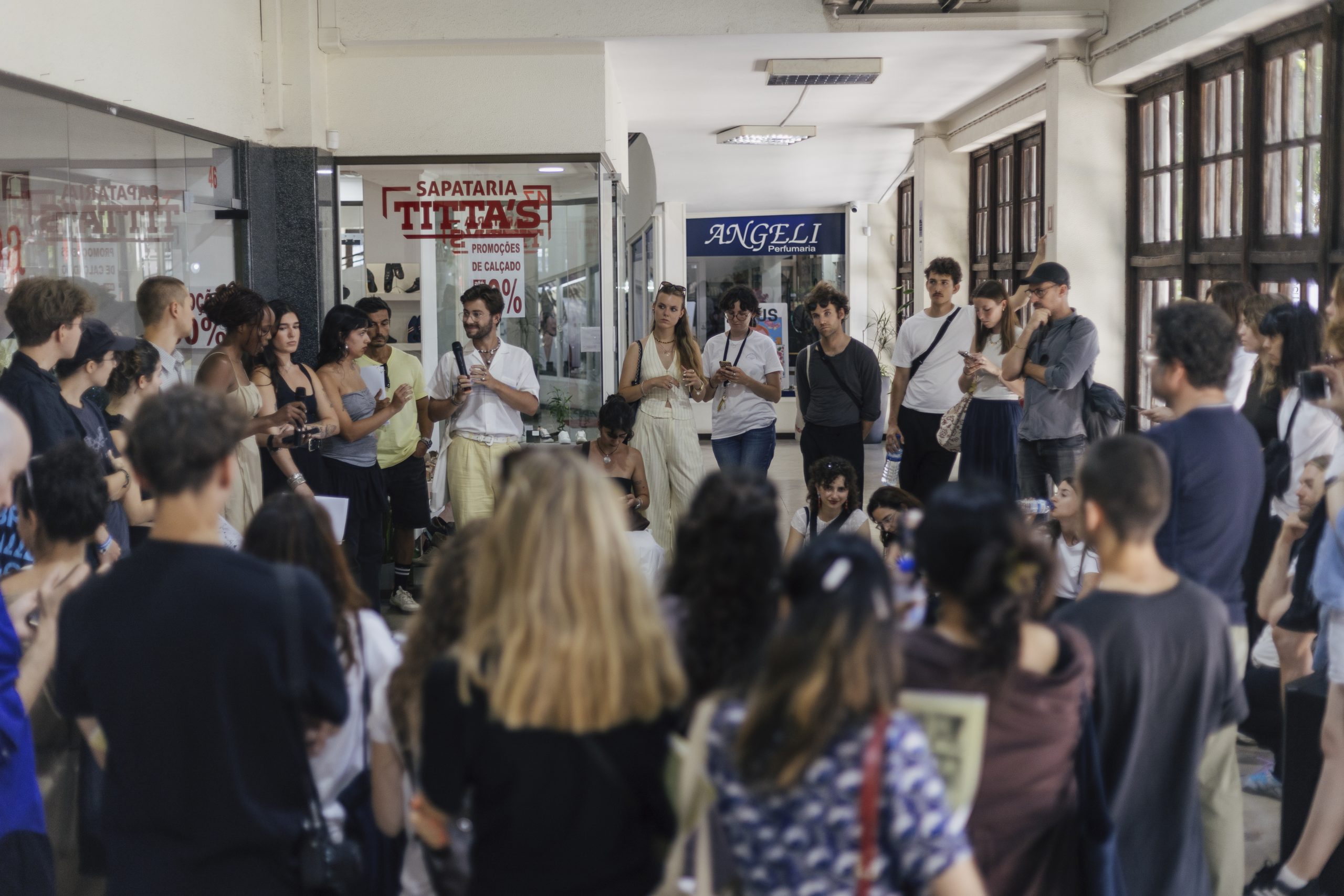
Between July 18 and 25, Shopyard Summer School brought together 30 architecture students from 17 countries in Braga for an intensive week of research, creation and debate on the future of first-generation shopping centers.
For seven days, the participants worked under the guidance of three European studios with critical practices in urban regeneration – OUEST (Belgium), BUREAU (Switzerland/Portugal) and OITOO (Portugal) – focusing on three central buildings in the city: Shopping Santa Cruz, Centro Comercial Santa Bárbara and Centro Comercial Galécia. Through direct observation, interviews with tenants, mapping, critical writing and speculative drawing, the students immersed themselves in the social and spatial dynamics of these buildings, many of which are now underused. The first results were presented publicly on a final tour of the three centers and will be further developed for a final exhibition in November, as part of the Shopyard project.
The group led by OUEST Architecture, working on the Galécia Shopping Center, adopted an immersive and sensitive approach, observing the complex network of social and cultural relationships already present in the building. Based on visits to the closed auditorium, interviews with shopkeepers and collaborative mapping, they imagined Galécia as a collective center, with small spatial interventions capable of reactivating disused spaces and restoring the building’s centrality in its urban context.
The group led by OUEST Architecture, working on the Galécia Shopping Center, adopted an immersive and sensitive approach, observing the complex network of social and cultural relationships already present in the building. Based on visits to the closed auditorium, interviews with tenants and collaborative mapping, they imagined Galécia as a collective center, with small spatial interventions capable of reactivating disused spaces and restoring the building’s centrality in its urban context.
The BUREAU team, at the Santa Bárbara Shopping Center, developed a speculative work based on the imagery of copying, repetition and fiction. Inspired by the center’s photocopy stores and its underground floor, they created a scenographic proposal that transforms a vacant store into a space for interspecies encounters, where architecture serves as a language of mediation and imagination. The installation in an unoccupied store demonstrates how artistic interventions in unlikely spaces can be a vehicle for urban activation and enhancement.
Starting from the premise that demolition is not an option, the group led by OITOO proposed the transformation of Shopping Santa Cruz into a cooperative housing infrastructure, capable of accommodating accessible forms of urban cohabitation. By studying circulations, atmospheres and spatial possibilities, they imagined new shared uses, such as common kitchens, workshops or urban gardens on the rooftops – recognizing urban regeneration as a response to the challenges of the contemporary city.
Alongside the fieldwork, Shopyard Summer School developed a daily public program with activities open to the community.
On Saturday, July 19, the Shopyard Assembly was held, with the participation of anthropologist Ana Catarino, researcher Janina Gosseye (TU Delft) and design critic Frederico Duarte, who put Braga’s shopping centers in dialogue with national and international cases, discussing their pasts, presents and possible futures. During the week, each of the three workshops also held public presentation and debate sessions, sharing their methodologies and visions with the participants and the local public, at store 33 of Shopping Santa Cruz – Shopyard’s headquarters.
Shopyard Summer School is part of the Shopyard project, curated by Space Transcribers as part of Braga 25 Portuguese Capital of Culture, which proposes reimagining first-generation shopping centers as urban and cultural laboratories, open to new forms of use, encounter and experimentation.